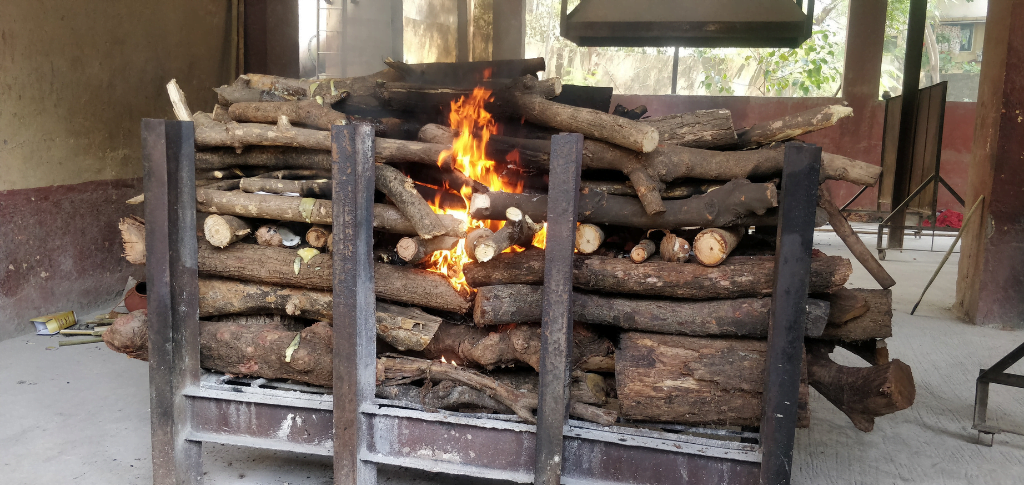The Hindu Antim Sanskar, or final rites, is a profound and culturally significant ceremony in Hindu traditions. It involves a series of rituals designed to honor and bid farewell to the departed soul, ensuring that the transition from this life to the next is carried out with respect and reverence. Understanding the associated costs, materials (samagri), and procedures (vidhi) is essential for families to plan and participate meaningfully in this final homage.
Understanding the Cost
The expense of performing the Antim Sanskar can vary significantly, influenced by several key factors:
- Location: The cost of the ceremony can differ greatly between metropolitan areas and rural regions. Urban centers often have higher costs due to increased fees for space, services, and logistics.
- Samagri: The materials used in the ceremony, known as samagri, can range widely in price depending on their quality and rarity. Higher-quality or specialized items typically come with increased costs.
- Services: This category includes fees for the priest or purohit, ceremonial services, and any additional helpers required for the ceremony. Costs can also rise depending on the level of service and expertise provided.
- Logistics: Transportation and arrangements for the body contribute to the overall cost. This includes the transport of the deceased and any associated logistical expenses.
- Additional Ceremonies: Post-funeral rituals or gatherings, if included, can further increase the total cost. These additional ceremonies often involve extra preparations and resources.
Planning the Antim Sanskar requires careful consideration of these factors to balance cultural traditions with financial constraints. By understanding these elements, families can better align the ceremony with both their cultural expectations and budget.
Planning a Budget-Friendly Antim Sanskar
For families looking to manage costs while honoring traditions, several strategies can help make the Antim Sanskar more economical:
- Focus on Essentials: Identify and prioritize the core rituals that are crucial for fulfilling religious obligations and personal preferences. Streamlining the ceremony to include only the most essential elements can reduce costs.
- Compare Costs: Investigate and compare prices for various services, including cremation or burial, priest fees, and other ceremonial services. Don’t hesitate to negotiate or seek quotes from multiple providers.
- Limit Guest Numbers: Reducing the number of attendees can help control expenses related to food, venue, and other hospitality costs. A smaller gathering can still be meaningful and respectful.
- Choose Eco-Friendly Samagri: Opting for environmentally friendly materials can lower costs while also supporting sustainability. These items are often less expensive and align with modern eco-conscious practices.
- Seek Community Support: Many communities offer assistance with funeral arrangements, sometimes at reduced costs or even free of charge. Reach out to local organizations or community groups for support.
While it is crucial to honor traditional practices, the essence of the Antim Sanskar lies in the respectful and heartfelt farewell of the loved one. The ceremony’s significance comes from the sincerity and devotion of the participants rather than its grandeur.
Essential Samagri for the Antim Sanskar
The Hindu Antim Sanskar involves several specific items, known as samagri, each carrying its own symbolic significance. These materials are used to perform the rituals with the appropriate reverence:
- Mango Leaves and Coconut: These are used to adorn the water pot, symbolizing purity and the commencement of a new journey for the departed soul.
- Sandalwood Paste and Incense Sticks: Essential for their fragrance and purifying properties, these items help to create a spiritually conducive environment.
- Flowers: Particularly marigolds, which are widely used for their vibrant colors and association with divine presence and purity.
- White Cloth: This is used to cover the body, signifying peace and respect for the deceased.
- Sacred Threads, Rice, and Ghee: These items are integral to various rituals, helping to invoke blessings and aid the soul’s journey to the afterlife.
- Earthen Pots and Utensils: Preferred for their biodegradable nature and traditional use, these items align with the cultural practices of simplicity and respect for the environment.
Families are encouraged to focus on the essential elements of samagri that hold the greatest spiritual significance, ensuring that the ceremony remains sincere and in line with traditional values.
Conclusion
In conclusion, the Hindu Antim Sanskar is a deeply spiritual and culturally rich ceremony that encapsulates the final journey of an individual’s soul according to Hindu beliefs. The costs associated with this ceremony can vary widely based on factors such as location, materials used, and personal preferences. Understanding these costs and focusing on the essential elements of the ceremony ensures that the Antim Sanskar is performed with the utmost respect and sincerity. The symbolic materials (samagri) and the procedure (vidhi) are integral to honoring the deceased and adhering to Hindu traditions, providing a meaningful farewell that respects both the cultural significance and the financial constraints of the family.



